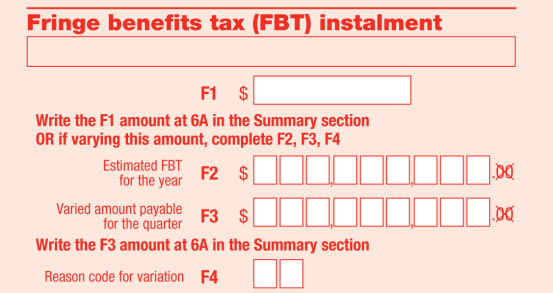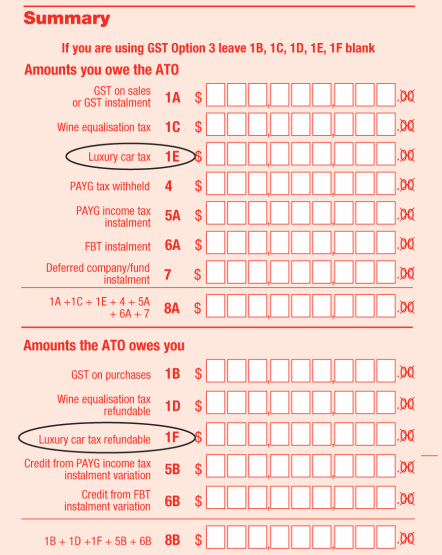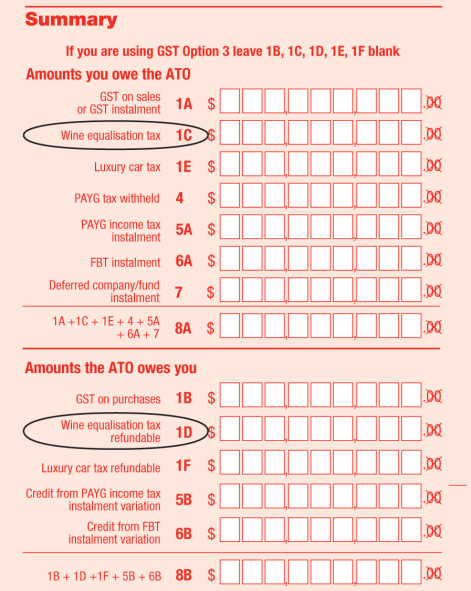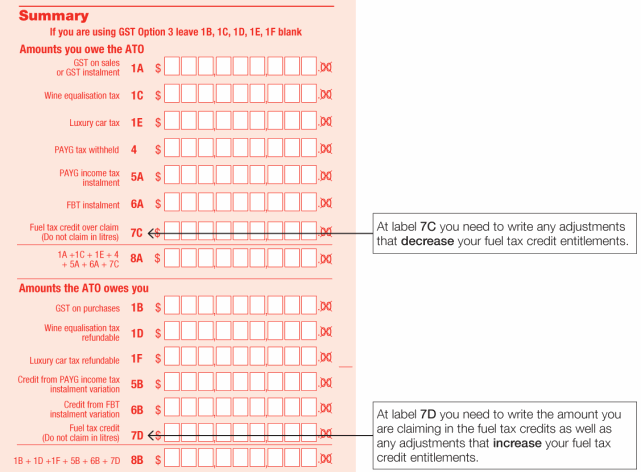This is the final part in a three-part blog series about Business Activity Statement (BAS) labels and what they all mean. You can read part 1 which covers labels for Goods and Services Tax (the “G” labels) and part 2 which looks at PAYG (the “W” labels) in your leisure. Part 3 of the series will showcase BAS labels used to report Fringe Benefits Tax, Luxury Car Tax, Wine Equalisation Tax and Fuel Tax Credits.
It’s important to note that not all of the labels I’ve presented in this blog series apply to every business. Some businesses will only report GST (G labels) and others might report both GST and PAYG withholding. Yet again, some businesses might be required to report GST, PAYG withholding and also PAYG income tax instalments. You will only need to report on the taxes for which your business is registered and if you’re not sure about this, it’s a good idea to ask your BAS Agent or accountant.
It’s a similar story for the labels I’m going to discuss today. Not every business will need to report activity on these taxes – put simply, if your business isn’t registered for these taxes, then you will not see their related labels on your BAS copy. The labels I’m referring to here are:
Fringe Benefits Tax Instalment (FBT) (“F” labels) – F1, F2, F3, F4 and 6A
Luxury Car Tax (LCT) – labels 1E and 1F
Wine Equalisation Tax (WET) – labels 1C and 1D
Fuel Tax Credits (FTC) – labels 7C and 7D
Now let’s look at these various labels in depth.
Fringe Benefits Tax Instalment (FBT)
FBT is a tax levied on most non-cash benefits an employer provides to employees. Benefits listed in the Fringe Benefits Tax Assessment Act 1986 include those related to cars, loans, housing and others. FBT is separate from income tax. If your business paid FBT of $3000 or more in the previous year, the tax will need to be paid quarterly by instalments on your BAS. The instalment amount will be pre-printed at label F1. Taxpayers may vary the instalment amount by reporting the varied annual amount at F2, dividing this by 4 and putting the result at F3. A reason code must be recorded at F4. Reason codes include:
| Reason for Variation | Reason Code Recorded at F4 |
| Business structure not continuing |
21 |
| Change in fringe benefits for employees |
22 |
| Change in employees with fringe benefits |
23 |
| Fringe benefits rebate now claimed |
24 |
The amount reported at F1 or F3 are transferred to label 6A on the BAS.

Luxury Car Tax (LCT)
LCT applies to cars with a GST-inclusive value exceeding the LCT threshold. The current threshold for 2014-15 is $61,884. The LCT is 33% of the GST-inclusive value that exceeds the LCT threshold. LCT will be payable if a car is on-sold or if it starts being used for private purposes or is changed to a capital asset in the business.
Label 1E – LCT payable
This is how to work out the LCT amount:
- Take the LCT value (price including GST, before LCT is added)
- Deduct the LCT threshold ($61,884 for 2014-15)
- Multiply this amount by 10/11 to exclude GST
- Multiply the result by 33% to work out the LCT payable
- Add the LCT value and the luxury car tax payable to work out the total amount that you charge a customer for the LCT
Label 1F – LCT refundable
This label is available to report adjustments to LCT from an earlier tax period if there is a change in circumstances e.g. price of the car has decreased, sale is cancelled, a debt has been overdue for 12 months or more, a bad debt has been written off in relation to a luxury car.

Wine Equalisation Tax (WET)
WET is 29% added to final wholesale sale of wine before GST is added – the retailer pays WET in the price they pay suppliers for wine. It’s the wholesaler or wine producer who pays WET to ATO. Labels on the BAS for WET include:
1C – WET payable
1D – WET refundable
However, it’s important to note that if you report and pay GST using a pre-printed instalment amount (option 3 on the activity statement), you won’t need to complete the WET section of your activity statement because the WET amount is included in that instalment amount.

Fuel Tax Credits (FTC)
Fuel tax credits provide businesses with a credit for the fuel tax (excise or customs duty) included in the price of fuel used in business activities, machinery, plant equipment and heavy vehicles. The BAS labels used here include 7C and 7D.
Label 7D – fuel tax credit entitlement
This label requires you to report the dollar entitlement which increases your entitlement to FTC.
Label 7C – fuel tax credit over-claim
This label requires you to report the dollar entitlements that decrease your entitlement to FTC.
Increasing and decreasing adjustment reasons can be seen here:
| Increasing Adjustments | Decreasing Adjustments |
| Use more fuel for eligible use than intended | Use less fuel for an eligible use than intended |
| Use fuel for a different eligible use (where the credit is greater) than intended | Use fuel for a different eligible use (where the credit is less) than intended |
| If you have not claimed your EGCS entitlement on fuel purchased or imported before 1 July 2006, you may claim that entitlement under FTC | Fuel acquired for an eligible use was lost, stolen or destroyed |

So that completes this three-part blog about the various labels on the BAS. To summarise, I have covered labels relating to GST, PAYG, FBT, LCT, WET and FTC’s. For an easy to read summary of all of these labels, go this ATO website page. I hope this blog series has helped to clarify what all of those little letters and numbers mean on the BAS 🙂

Thanks really easy to understand, really helped in my study